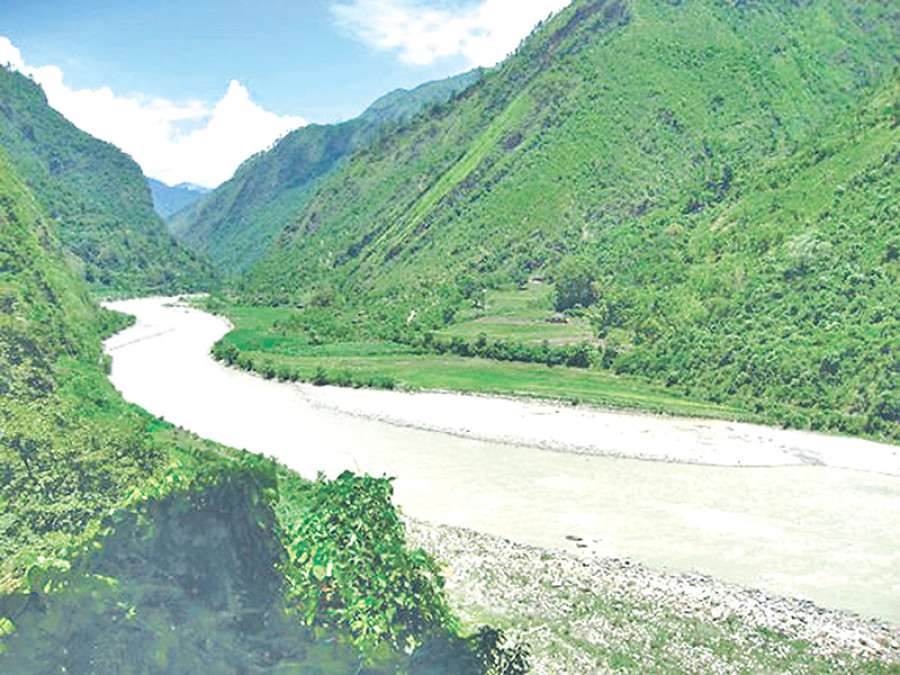Valley
Collapse of deal calls for serious soul-searching
The formation of a three-member task force to prepare a modality for the development of West Seti Hydroelectric Project on Tuesday formally closed the chapter of China Three Gorges International with the multi-billion project.
Bibek Subedi & Mukul Humagain
The formation of a three-member task force to prepare a modality for the development of West Seti Hydroelectric Project on Tuesday formally closed the chapter of China Three Gorges International with the multi-billion project.
While the task force that includes the finance minister, energy minister, and chief executive of the Investment Board Nepal still has a month to come up with the modality, six years of continuous and unsuccessful negotiation with the Chinese company has called for some serious soul-searching on part of the Nepal government.
As the administration moves forward to explore a new modality, multiple questions have surfaced regarding the future of the 750MW project. How will the multi-billion project move forward? Will there be international bidding again or will the government itself take the responsibility for developing it?
The West Seti has been in the news since the early 1990s but without a breakthrough. First, it was Australia’s Snowy Mountain Engineering Corporation (SMEC) that held the survey licence for almost two decades without any significant progress.
When the Chinese company entered the scene in 2011, there was much hope that the project would be eventually built. Such expectation was natural as the developer of the world’s largest hydropower dam—Three Gorges Project—had signed the memorandum of understanding for West Seti.
When all-important talks between the IBN and the CTGI collapsed in the last week of August, IBN CEO Maha Prasad Adhikari said that it had taught some important lessons to Nepal.
“We’re yet to make a large reservoir project viable for private developers,” said Adhikari, adding that the government now must have a clear policy on the issues of land acquisition and resettlement.
According to Adhikari, since Nepal does not have large reservoir hydropower projects, any project of this kind of magnitude that involves private financing needs to be treated carefully. “The failed negotiation with the Chinese company taught us that we need a new policy when it comes to resettlement and rehabilitation issues of a storage-type project,” he said.
As private developers see risks on resettlement and rehabilitation, who will take responsibility for these aspects has become a major issue, especially in the storage-type projects. In case of Budhi Gandaki Hydroelectric Project, the government is providing compensation to the locals whose land is affected by the project.
As West Seti has been lingering for last three decades, its cost has spiralled. Among the large reservoir projects, the West Seti is in danger of becoming the second costliest project after Budhi Gandaki. “If this situation prevails longer, then it may lose its priority too,” Adhikari said.
Since the development of West Seti under the public-private partnership (PPP) model has collapsed for now, IBN officials say that a high-level task force has a difficult decision to make: whether to develop the project under the PPP model or suggest the government to launch the project on its own.
Some officials within the government think the project should be built using domestic partners. In fact, the government had stated in its current fiscal year budget that West Seti would be developed by mobilising internal resources.
In Tuesday’s board meeting, the IBN decided to forward the proposal of inviting international developer for the project development under PPP model. As per the IBN proposal, a new expression of interest (EOI) can be called with an arrangement whereby foreign developers will have a majority stake and certain stake will go to the Nepali side. However, the board of directors were of the view that there should be a comprehensive discussion on the modality.
Hydropower experts say the project cannot be lingered for long. Khadga Bahadur Bisht, former president of the Independent Power Producers Association Nepal, said the government should act swiftly now.
“We have lost almost thirty years,” Bisht said. “Since all studies regarding the project are in place, the government should call international bidding giving foreign developers 51 percent stake in the project. The remaining 49 percent can be allocated to local stakeholders.”
While the issue of power purchase agreements in dollar has been a major concern for foreign developers, Bisht suggests the government should say there will be PPA in dollar for the loan portion of the project financing.
According to him, three projects—West Seti, Budhi Gandaki, and Nalsingh Gad—are ready for construction. “These projects can be developed under the same modality, giving ownership and equity to provincial governments under which the projects fall,” he said.




 11.12°C Kathmandu
11.12°C Kathmandu










